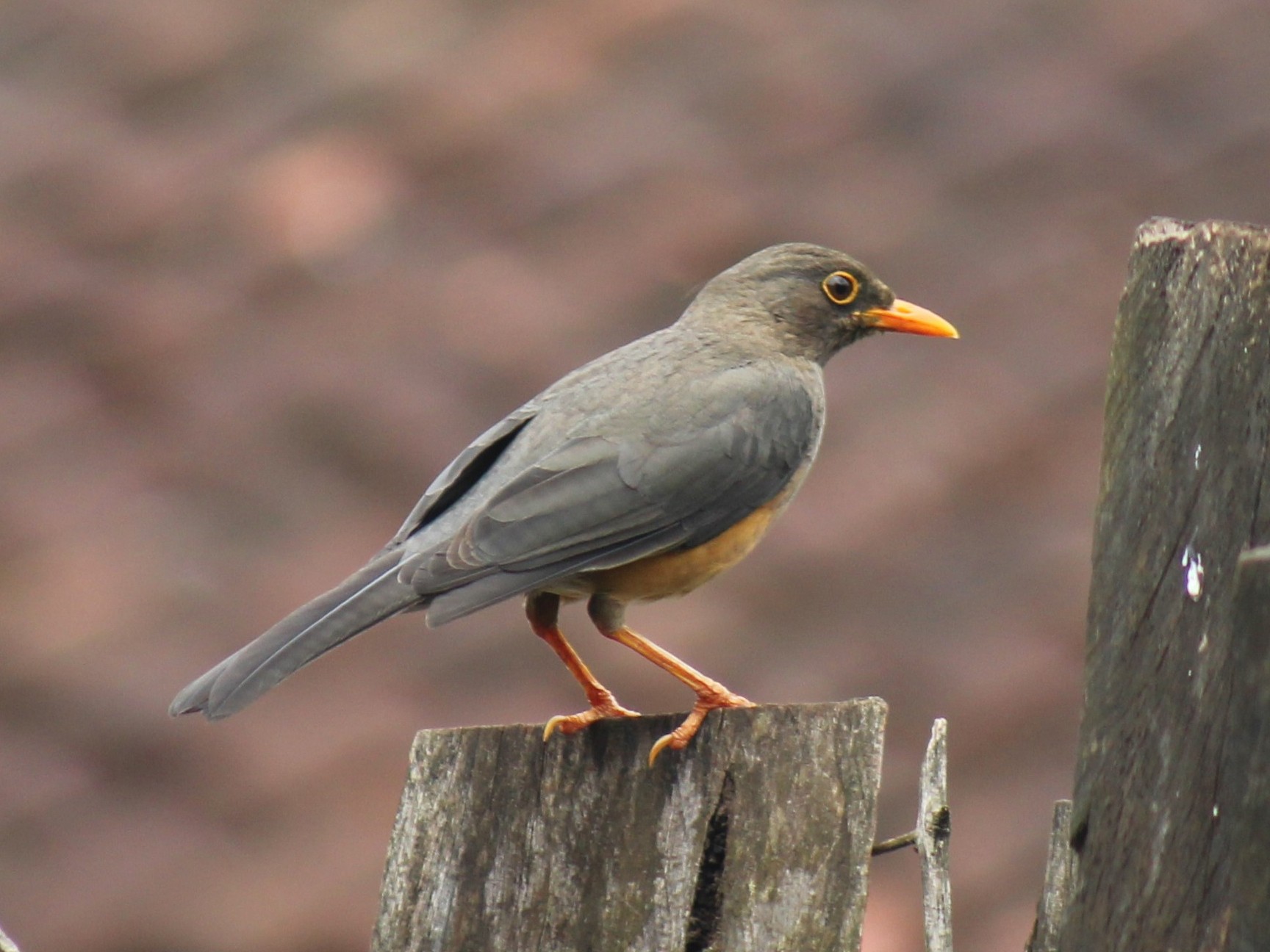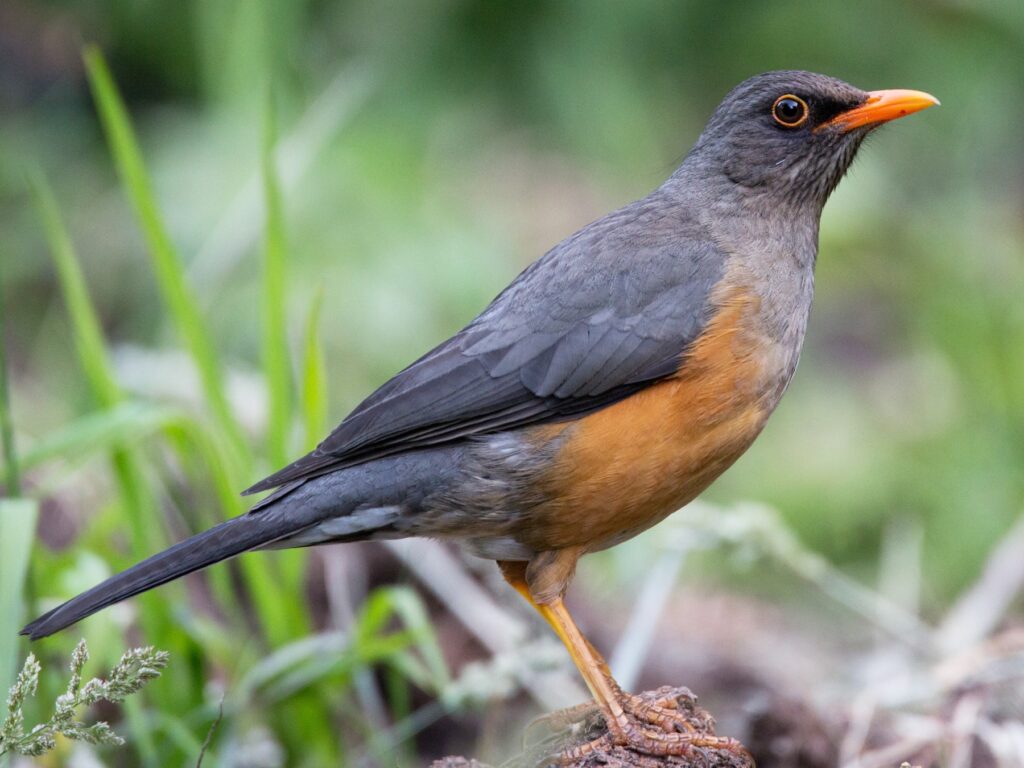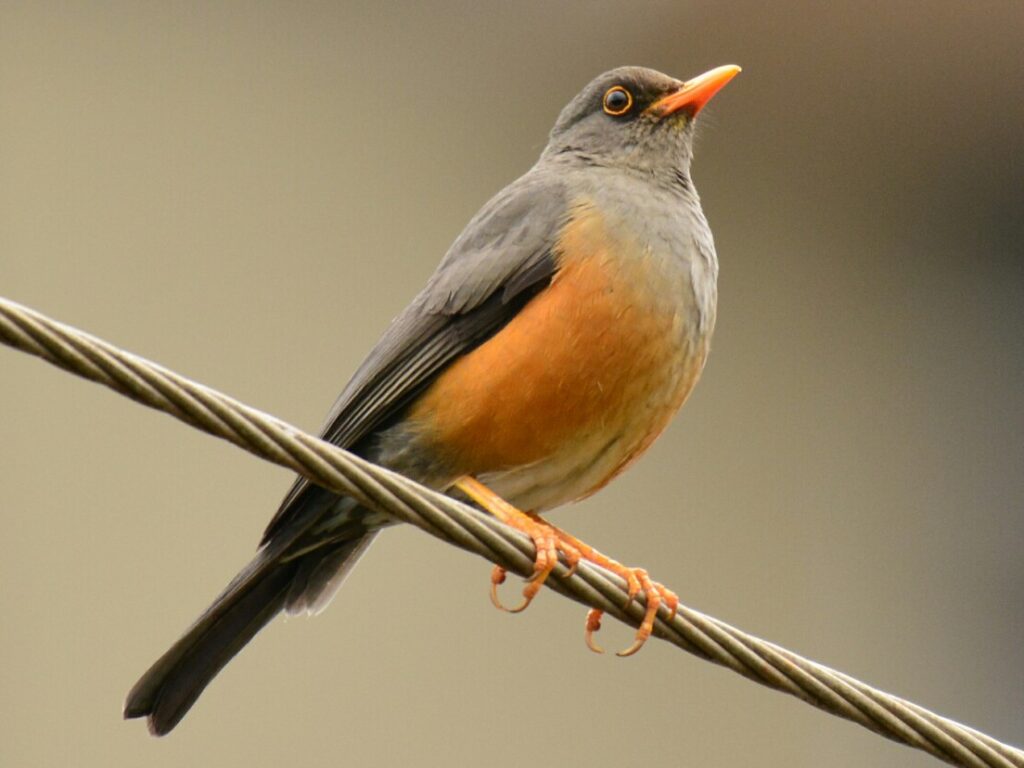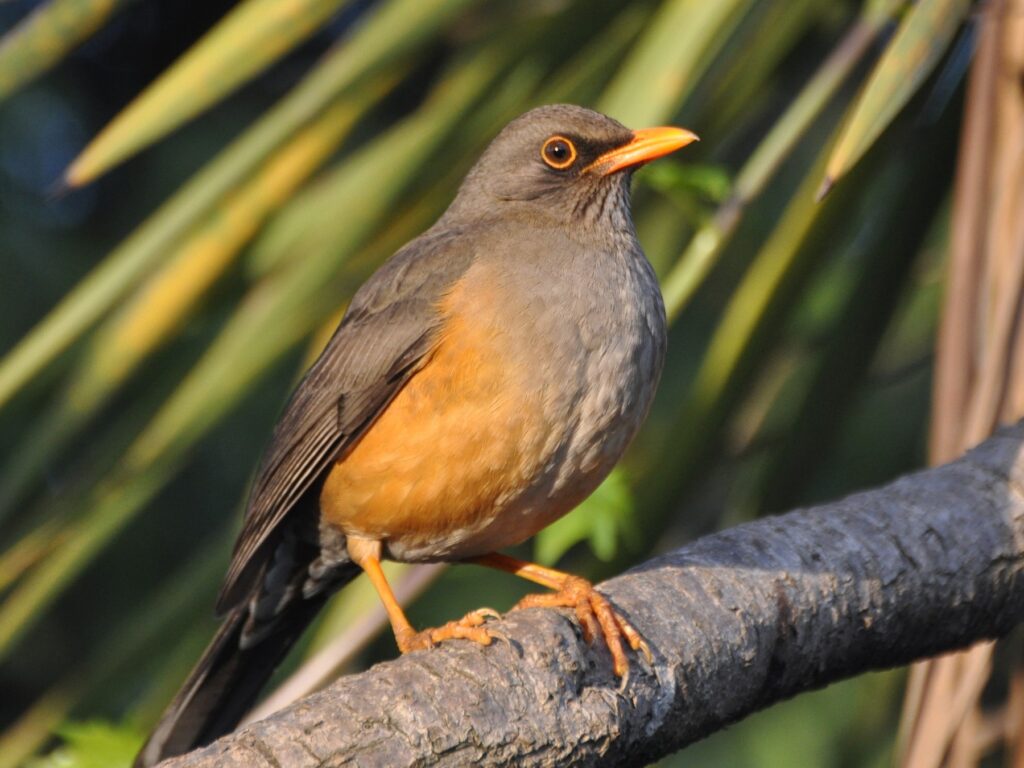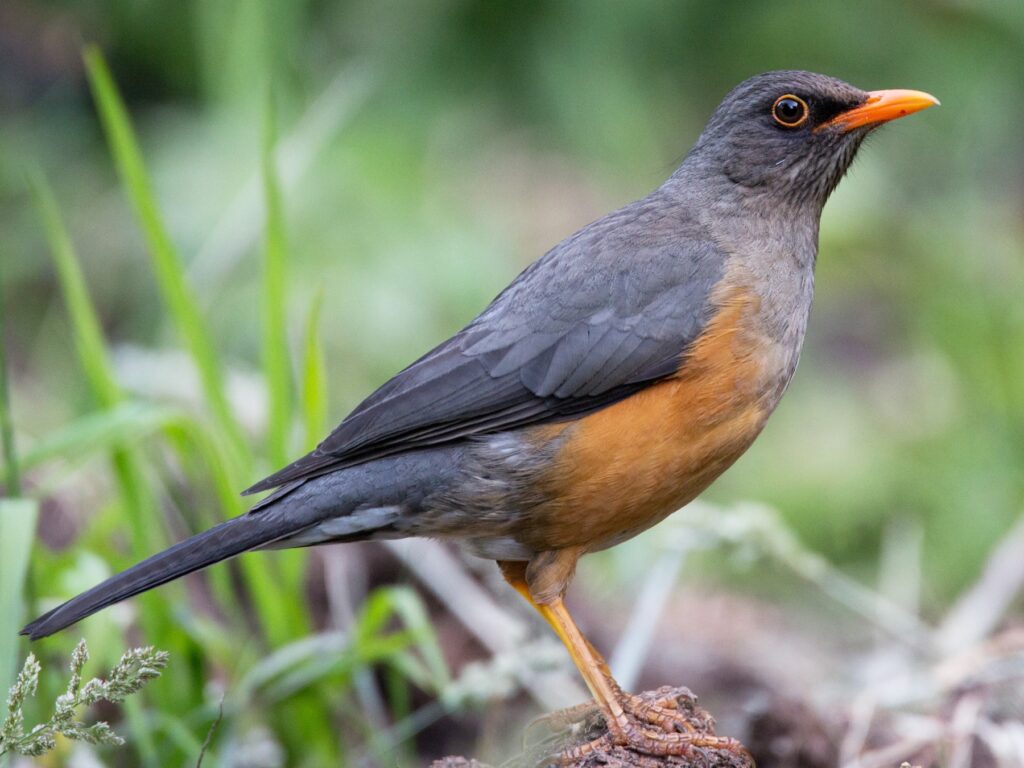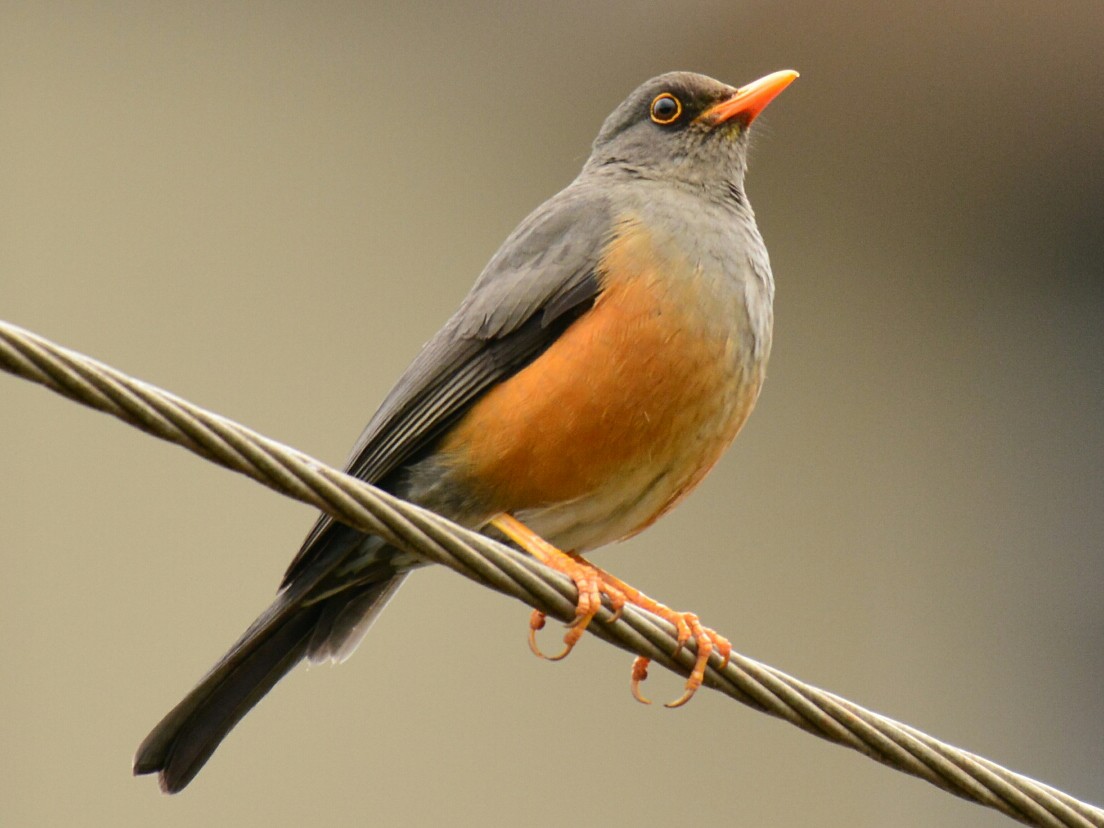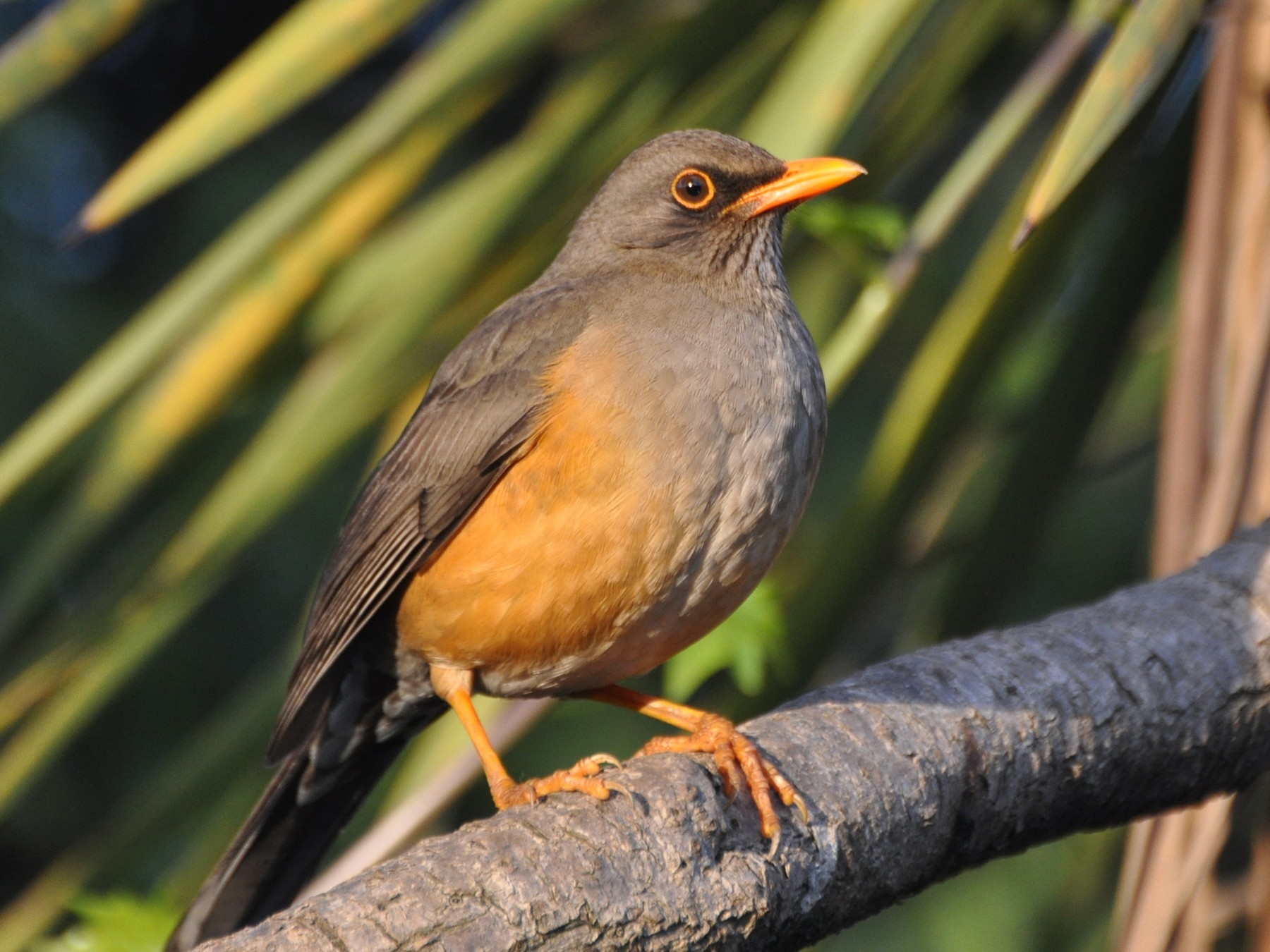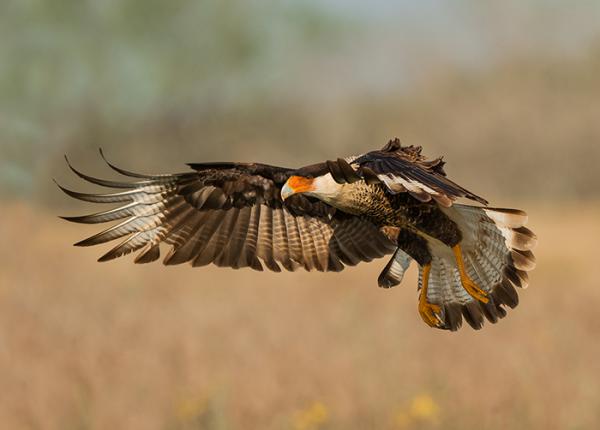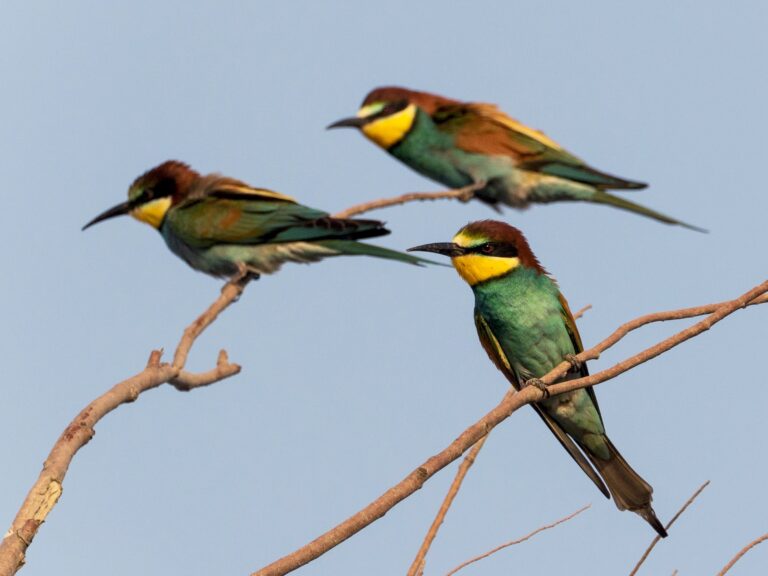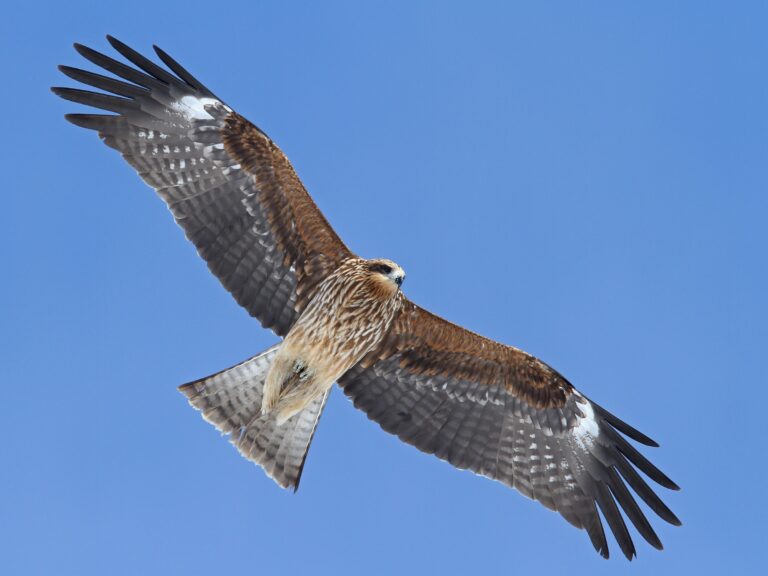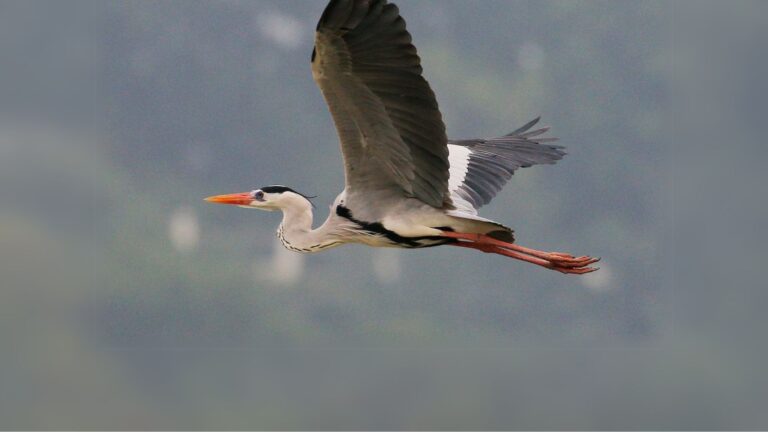Abyssinian Thrush Identification, Habitat, and Fascinating Facts
The Abyssinian Thrush is a striking bird native to the highlands of Ethiopia and surrounding regions, recognized for its melodious song and attractive plumage. Birdwatchers and nature lovers chase after this bird for its distinct look and its place in local ecosystems.
Its intriguing habits and calls make it a favorite among those hoping to spot unique wildlife in Africa. This bird, sometimes called Turdus abyssinicus, belongs to the thrush family and is related to other familiar thrushes found across Africa.
The Abyssinian Thrush stands out with gray-brown upperparts, orange underparts, and a bold white eye-ring. It lives mostly in evergreen forests, woodland edges, and sometimes even gardens in the Ethiopian highlands, as described in birding studies of the Addis Abeba region.
Key Takeaways
- The Abyssinian Thrush is native to Ethiopia’s highlands and nearby areas.
- It can be recognized by its orange breast and white eye-ring.
- Its preferred habitat is forest and woodland edges.
Taxonomy and Classification
The Abyssinian Thrush sits within a complex group of African thrushes. It has a detailed scientific history, connecting to several closely related subspecies in the Turdidae family.
Scientific Naming
The Abyssinian Thrush answers to the scientific name Turdus abyssinicus. Over the years, bird experts have studied it under a few different names, reflecting shifts in how we understand bird relationships.
Older taxonomies sometimes lumped the Abyssinian Thrush with other African thrushes. More recent research supports treating it as a separate species.
Its name follows typical ornithology conventions, with “Turdus” as the genus for true thrushes and “abyssinicus” nodding to its Ethiopian roots. Debates about its classification pop up now and then, often comparing it to the Olive Thrush and related birds.
If you want to dig deeper into Turdus naming and the tangled web of species relationships, check out this systematic review of African thrushes.
Subspecies Overview
Several subspecies of the Abyssinian Thrush exist, each reflecting their region with subtle differences in color, size, and song. Some authorities recognize up to four subspecies, mainly in the eastern highlands of Africa.
This bird’s range overlaps with other Turdus thrushes, which can make identification a bit confusing. Where their ranges meet, subspecies may intergrade, resulting in birds with mixed features.
Taxonomy keeps shifting as researchers gather better data. If you’re after details on subspecies divisions, Birds of the Horn of Africa covers it well.
Family Turdidae
The Abyssinian Thrush belongs to the Turdidae family—these are the true thrushes. This group includes both everyday species like the Eurasian Blackbird and some regional oddballs found across Europe, Asia, and Africa.
Members of the Turdidae family share rounded wings, lovely songs, and a mixed diet of insects and fruits. They’re recognized for their rich vocalizations and their roles as seed dispersers.
Studies on Turdidae relationships help us see how the Abyssinian Thrush fits among its close relatives. For more on thrush taxonomy, check out this overview of African birds.
Physical Description and Identification
The Abyssinian Thrush stands out for its striking plumage, unique body shape, and memorable song. Observing its feather markings, size, and calls helps birders spot it in the wild.
Key Plumage Features
This thrush shows off a slate-grey head and back with a bright orange breast and belly. That color combo makes it hard to miss in montane forests.
Its wings are dark olive-brown with faint white markings near the tips. The bill is yellowish, and the eye sports a crisp white ring that pops against darker feathers.
Look closely and you’ll notice the tail is tinged with orange underneath—most obvious when it perches or flicks its tail. Among African thrushes, its rich color contrast sets it apart.
If you want to get a sense of what to look for, detailed photos and ID images online can help.
Size and Shape
The Abyssinian Thrush lands in the medium-sized range for African thrushes. It usually measures about 22 to 24 centimeters long.
This bird has a rounded head, a medium-length neck, and a sturdy body—pretty classic for the Turdus genus. Its wings seem fairly short compared to its tail, and the bill is strong and straight.
The legs are slender but not particularly long, perfect for foraging on the forest floor. When perched or feeding, it holds itself upright, looking pretty alert.
Compared to other forest birds, its size and shape make it easy to recognize, especially if you’re flipping through field guides or scanning with binoculars.
Vocalizations
The Abyssinian Thrush is famous for its rich, flute-like song. Its calls are melodic, with clear, repeated whistles and phrases that carry through forests at dawn and dusk.
These sounds help experienced birders track it down without ever laying eyes on it. Vocalizations often include repeated “twee-tuu-ree” notes, and sometimes the bird throws in a little mimicry of other birds.
If you’re curious about their calls, xeno-canto has field recordings you can compare and use to confirm an ID by ear.
Distribution and Habitat
The Abyssinian Thrush mostly shows up in the highland regions of eastern Africa. It lives in a range of environments but definitely has its favorite spots, especially within Ethiopia.
Geographic Range in Africa
You’ll mostly find the Abyssinian Thrush in the highlands of eastern Africa. Its range covers Ethiopia, Eritrea, and parts of Sudan.
It’s especially common in the Ethiopian Highlands, where cool air and lush plants make for a great home. Unlike the Olive Thrush, which gets around more, the Abyssinian Thrush sticks to higher altitudes in the northeast.
Small populations may crop up along other mountainous regions, but you won’t catch them in lowland zones too often. For more details, there’s this summary of birds in Addis Abeba.
Preferred Habitats
This thrush likes moist forests, woodlands, and bushy highland slopes. You’ll usually spot them in places with lots of cover—evergreen forests, thick shrubby areas, that sort of thing.
Their favorite altitude runs from about 1,800 meters up to 3,200 meters above sea level. In these spots, they search for food on the forest floor and sometimes in open clearings.
Nearby gardens and plantations can attract them, especially if there’s natural forest close by. They steer clear of dry lowlands, open grassland, and heavily urbanized areas.
Protected forests and spots with less grazing pressure help keep bird diversity high, including the Abyssinian Thrush. Studies of Ethiopian forest habitats back that up.
Population in Ethiopia
Ethiopia holds most of the world’s Abyssinian Thrushes. The bird is a regular in the Ethiopian Highlands, showing up in forest zones, mountain valleys, and near streams.
In Addis Abeba, it’s a familiar sight, sharing space with the Olive Thrush and Groundscraper Thrush. In forests and protected places like the Menze-Guassa Community Conservation Area, populations tend to stay stable.
Bird diversity peaks in natural and protected forests. In these areas, the Abyssinian Thrush keeps up good numbers, especially where habitat loss is less of a problem.
In more disturbed areas—think overgrazing or deforestation—sightings drop off.
Behavior and Ecology
The Abyssinian Thrush is a bit secretive, with habits that shape how it fits into its ecosystem. Its behavior influences how it interacts with other wildlife and the environment across Africa.
Feeding Habits
This thrush mostly eats fruit, insects, and small invertebrates. Its diet shifts with the seasons—more fruit during the wet season, more insects when they’re around.
Foraging usually happens on the ground or in low bushes. Sometimes, it joins mixed-species flocks, which helps it find food and avoid predators.
You might see it flipping over leaves or probing the soil with its bill, searching for insects or worms. Feeding can happen solo, in pairs, or in small groups.
When food is plentiful, the bird may travel a fair distance to find fruiting trees. Its foraging helps control insect populations and spreads seeds, which is great for forest health.
A study on the African Thrush—a close cousin—shows similar feeding patterns and adaptability, as described in the feeding ecology of Turdus pelios.
Breeding and Nesting
Breeding usually lines up with the rainy season, when food is everywhere. Abyssinian Thrushes build cup-shaped nests from grass, leaves, and twigs, tucking them into tree forks or dense bushes for safety.
The female handles nest building and incubates the eggs. Clutch sizes run two to three eggs.
After hatching, the male helps feed the chicks, so both parents pitch in to raise the young. Nests are often well-hidden to keep predators at bay.
Like other thrushes, the Abyssinian Thrush sometimes deals with nest predators and even brood parasitism by other birds. Their breeding habits are a lot like the nesting behavior of the Wood Thrush, even though they’re not closely related.
Migration Patterns
The Abyssinian Thrush doesn’t migrate long distances. For the most part, it’s a resident bird.
Local movements happen, though, especially when food or weather changes. These short trips usually follow fruiting cycles in local forests or woodlands.
Sometimes, birds move to lower elevations during the dry season to find water and food. Since its habitat can shift with the seasons, tracking these local movements matters for conservation.
Unlike some thrushes, it rarely travels across huge regions or continents, which helps keep populations steady in its home turf. Local movements let it take advantage of different resources without straying far from its territory.
Conservation Status and Research
The Abyssinian Thrush plays a unique role in Ethiopia’s ecosystems. Conservation groups and scientists keep a close watch on its population, threats, and ongoing research to steer protective actions.
IUCN Red List Status
Right now, the Abyssinian Thrush sits at Least Concern on the IUCN Red List. There’s no solid evidence of a rapid population drop.
Its broad range across Ethiopia keeps its numbers pretty steady. The IUCN considers both its wide spread and current stability.
That status isn’t set in stone. Land use changes or climate swings could tip the balance in the future.
Reviewers frequently update the assessment if new risks show up. Keeping tabs on the bird’s numbers and movements matters, especially if we want to catch problems early.
Threats and Conservation Efforts
The biggest threats to the Abyssinian Thrush are habitat loss from deforestation, expanding farmland, and poor land management. These actions shrink the forest cover and undergrowth the bird relies on.
Conservationists focus on safeguarding forest habitats and cutting back human impact. Reserves and protected areas give these birds some breathing room.
Local teams work with communities to balance land use and conservation, especially in places like the Sheka Forest Biosphere Reserve. This reserve supports all kinds of bird life.
Education and legal protections also matter a lot. When local people get involved, conservation efforts tend to work better.
Recent Scientific Studies
Researchers in Ethiopia have tracked bird diversity in protected areas and mapped where the Abyssinian Thrush turns up at different elevations. Studies in Oromia and the Sheka Forest look at species richness, population changes, and pressures on bird communities.
Annotated checklists in Oromia and avian surveys in Sheka offer data on distribution and ecosystem needs. Scientists also watch how land use and policy shifts affect local bird populations.
New findings get published regularly, which helps conservationists adjust their methods.
Media and Resources
There are tons of resources out there for anyone curious about the Abyssinian Thrush. You’ll find photos, videos, panoramas, and audio—handy for bird identification, learning, or research.
Stock Photos and Images
Photographers—both pros and hobbyists—have snapped some fantastic shots of the Abyssinian Thrush in the wild. Sites like Shutterstock, iNaturalist, and Getty Images are packed with detailed stock photos.
People use these for field guides, educational slides, or just to admire.
Key features in photos:
- Bright orange breast and dark head markings
- Forest or woodland backgrounds
You’ll spot both close-ups and wider scenes showing the thrush foraging or perching. If you’re into African forest birds, check out the open-access paper on bird diversity in the Nensebo forest for more images and insights.
Videos and Vectors
Videos add a whole new dimension, showing how the Abyssinian Thrush moves and sounds. YouTube and Vimeo have short clips featuring its unique calls and behaviors.
Some groups even make documentaries on Ethiopian birds, including this species.
Digital artists or teachers can grab vector illustrations from Adobe Stock or Freepik. Vectors work great for infographics, worksheets, or anything you need to resize without losing quality.
Popular uses:
- Animated field guides
- Posters for classrooms
- Online learning tools
Panoramic and 360° Images
Panoramic and 360° images give a sense of the thrush’s environment. You can check these out on Google Earth or birding sites that focus on East African habitats.
These immersive images help you:
- See the kind of places the thrush likes
- Plan bird-watching trips
- Teach about different habitats
Exploring a 360° view lets you appreciate the forests, thick trees, and undergrowth that matter to this bird.
Audio and Field Recordings
Field recordings are gold for anyone wanting to recognize the Abyssinian Thrush by ear. The Xeno-canto site has lots of audio files from birders and researchers.
You’ll hear songs, alarm calls, and even the background sounds of their habitats.
These recordings help:
- Birders train their ears
- Researchers study bird communication
- Educators build sound libraries
Most clips are free for non-commercial use if you give credit, so they’re perfect for lessons or outreach.
Frequently Asked Questions
Abyssinian Thrush and its close relatives each bring their own habits, looks, and diets to the table. Their habitats and conservation status reflect the unique corners of the world they call home.
What is the habitat range of the Somali Thrush?
You’ll mostly find the Somali Thrush in the mountains and highlands of Somalia and parts of Ethiopia. It likes forest edges and woodlands, where it can hide and hunt among thick leaves.
Want more on bird ranges in East Africa? Try this atlas for Ethiopia and Eritrea.
Are there any distinct behaviors unique to the Kurrichane Thrush?
Kurrichane Thrush sings to mark territory, usually from a high perch. It digs through leaf litter for insects and sometimes puffs up or flicks its wings when another bird gets too close.
These displays help it defend its turf and catch the eye of potential mates.
How does the diet of the Karoo Thrush differ from that of similar thrush species?
Karoo Thrush eats insects, worms, and fruit, but it’s more likely to snack on small reptiles than other thrushes. It prefers feeding on the ground in dry, open areas, while some relatives stick to wetter spots and eat more fruit.
Can you identify notable physical characteristics of the Usambara Thrush?
The Usambara Thrush stands out with a dark head, warm brown back, and orange underparts. Its bold white eye-ring really pops, making it easier to spot in forests.
It also has pinkish legs and a slimmer bill than you might expect.
What is the conservation status of the Olive Thrush?
The Olive Thrush isn’t globally threatened and remains common in many places. It adapts well to gardens, forests, and parks, which helps it keep steady numbers.
Birdwatching reports from Ethiopia, like this one, mention its abundance pretty often.
What adaptations allow the Ethiopian Thrush to thrive in its environment?
The Ethiopian Thrush sports strong legs, which help it dig through leaf litter while searching for food. It also uses its sharp bill to pick out insects and berries—pretty effective, honestly.
Its dull, mottled colors let it disappear into the shadows of the forest. You’ll usually find it in highland forests, where the cooler air keeps it safe from extreme heat and, hopefully, most predators.
